Saflok Troubleshooting: Comprehensive and Detailed Guidance
This article will give you a comprehensive and detailed guide to help you process Saflok Troubleshooting if you are using Saflok locks for your hotel.
Do you have a Saflok hotel door lock that is causing you problems? Do you wish for a comprehensive guide on Saflok troubleshooting that isn’t as complicated as the company’s customer service? ShineACS Locks has compiled all the information and advice we could find to help you deal with Saflok troubleshooting.
Saflok HH6 troubleshooting
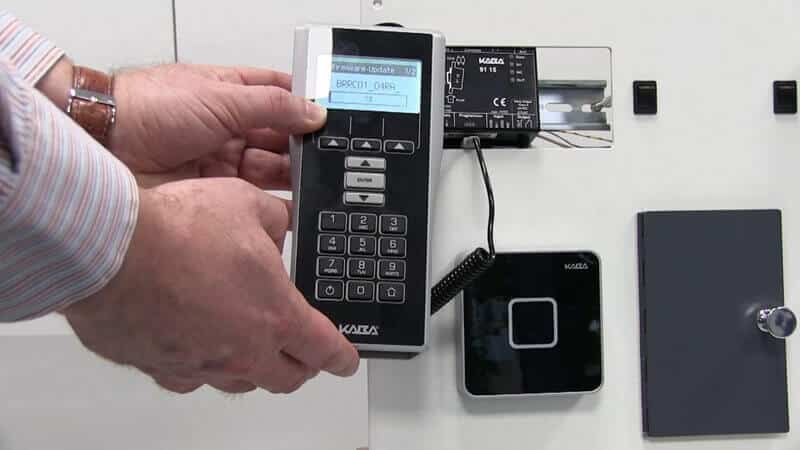
Check SAFLOK HH6 Flash Battery
Check the Saflok handheld programmer battery level and ensure it isn’t low. If it is, charge the battery using a wall charger or USB cable.
Ensure that both batteries in the programmer have been charged to the total capacity. If you purchased new batteries, they must be fully charged before use.
It is best practice to remove one battery after each use until you get it right and then continue with the second battery so they can be fully charged simultaneously instead of both being discharged simultaneously.
If the Saflok hh6 battery is not charging, try this:
- Please remove the battery and put it back in.
- Check if there is any damage to the prongs of your Saflok hh6 programmer manual. Use a clean cloth to wipe off any dirt or dust on these parts of your programmer cable.
- Try using another power source and ensure it’s connected properly with no loose connections between its wires and electrical outlets (or you can check it with an ammeter).
Check SAFLOK HH6 Programmer Cable
Make sure the Saflok hh6 programmer cable is connected to your PC. The SAFLOK HH6 programmer cable is a USB-A to mini-USB cable that connects the handheld programmer to your computer. The length of the cable is 1.8 meters (5 feet).
Ensure that the operator keypad or programmer cable is firmly connected to the central unit and powered up correctly by checking with another device, such as a phone charger or laptop computer, if possible because sometimes this connection must be changed depending on what type of device is available for testing purposes;
Refer to the Saflok hh6 handheld programmer manual if you need more troubleshooting steps or additional information on operating and programming your device.
Saflok encoder troubleshooting
If you have difficulties with the Saflok encoder, we have a few troubleshooting tips to help you get back on track.
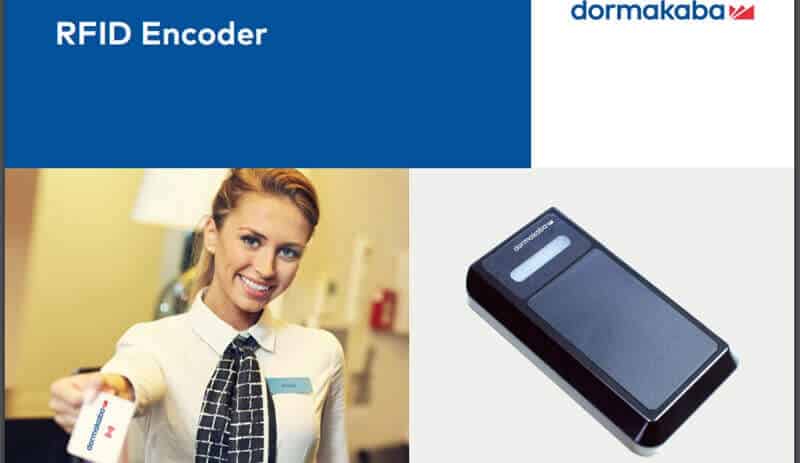
If your Saflok encoder is not working, check a few things.
- First, ensure that the hotel key card is not damaged or scratched. If it is, that may be causing the problem.
- Check that the cable connecting your Saflok encoder to a computer is secure, with no exposed wires or damage. If there is any visible damage on either end of this cable, you must replace it before attempting to use your safe lock again.
- The unit is not communicating with your computer. If this is the case, check if your USB cable is plugged in correctly and connected to both devices (the computer and Saflok pad). Try unplugging both devices, waiting 10 seconds, and then plugging them back in again. If this doesn’t solve it, contact us for further troubleshooting advice.
- Check the power supply. The first thing to check is whether or not the device has power. If there isn’t any light coming on, it could mean that there’s no power running through the system.
- Make sure that both ends are clean and dry before continuing with programming. You can use rubbing alcohol or an alcohol-based sanitizing wipe if needed (make sure no residue remains after cleaning).
- The Saflok key card encoder light is blinking red and green alternately. This means that the system has detected an error with the encoder and needs to be serviced by a technician.
- The Saflok Light is on steady instead of blinking. This means that there are no problems with your lock.
- Check for other label errors by looking at error codes listed by your printer manufacturer (if applicable). This can give some insight into what may be causing problems with your Saflok encoder so that they can be fixed accordingly!
Saflok MT RFID troubleshooting
Saflok MT RFID is a hotel door lock system with an electronic locking mechanism and a proximity card reader. If your Saflok MT RFID hotel locks have problems, you can try troubleshooting with the following steps:
- Is power connected? If not, check all Saflok MT RFID lock batteries and replace them. Then, test again.
- Is there proper voltage at both ends of each wire in every circuit? If not, repair/replace wiring as needed before retesting.
- Solid green – The system has power and is ready to use. You may need to press the * button on the keypad or touch off once with your card for the door to unlock. If this does not work, try pressing * again.
- A flashing red light will indicate that your battery is low and should be replaced soon!
- Fast blinking green indicates that a valid card has been swiped but failed authorization due to no way being found through which it could pass.
- If the Light doesn’t blink when you enter your code, something may be wrong with your system—perhaps it needs to be reset or programmed again by a professional.
- If neither of these steps works, then contact Saflok customer service immediately so they can help resolve this issue!
- Also, you can check the above Saflok RFID light codes for your reference to solve your problems.
Saflok key troubleshooting
Saflok key troubleshooting is essential for getting your Saflok key system to work correctly.
If your Saflok key is not working and you need to resolve it, then simple steps will help ensure that everything gets fixed immediately. Just follow these instructions carefully:
- First off, Please confirm your Saflok key has been programmed.
- If your Saflok key has been programmed, please confirm you are trying to open the right programmed Saflok door lock. Some people may try to open the wrong lock.
- If you confirm both the Saflok key and Saflok door lock are all programmed, please check the Saflok door lock batteries.
- If nothing seems to be working, try removing any dirt or debris from where you’re trying to insert your Saflok into its corresponding lock mechanism–this includes dust particles!
Other Common Saflok lock faults
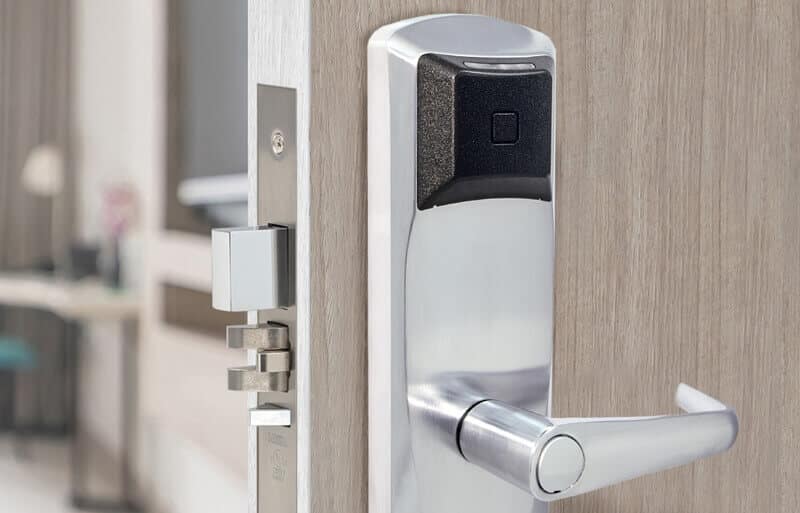
The Saflok lock is not working.
If your Saflok lock is not working or has trouble opening it, a few common issues can be resolved with the following troubleshooting steps.
- Make sure that the battery is charged and inserted correctly.
- Reset the lock by pressing both buttons for five seconds (you will hear two short beeps). This will reset all settings on the lock to their original factory settings so you can start over from scratch if necessary!
- Try using different keys/cards until your issue has been resolved; this may help determine whether something is wrong with one particular card/key rather than your entire system, which would require more extensive repairs.
- This may be due to an error in the programming of your keycard.
Please note that ShineACS Locks is just writing the Saflok locks troubleshooting article and providing possible handling suggestions, not offering after-sales service. If you can’t finally solve your problem with our article content, please contact the Official aftermarket.
But if you want to change your hotel door lock, check our TThotel door lock system to help you manage your hotel room door more safely, remotely, and conveniently with your phone.
Saflok locks are not accepting keycards.
If your Saflok lock fails to respond, it is probably because of one of the following reasons:
- The batteries need to be replaced.
- The card reader may have become clogged with dirt and lint over time. To fix this, clean the slot using a small brush or blow it gently until all debris is removed.
- The keypad could malfunction due to water damage or excessive moisture exposure (it’s important not to leave your keypad near running water).
- Try to reset the Saflok lock. This should reboot your lock and get everything working again.
- If this doesn’t work and you’re still having trouble unlocking your Saflok, try using a different keycard with the device; if one keycard doesn’t open it, there’s probably something wrong with that particular card with the lock itself.
The Saflok lock isn’t turning/responding.
If your device isn’t responding when turning, there may be an issue with its battery and the motor. A common problem associated with batteries in electronics like these is overcharging; ensure that you’re using the correct charger for your item – if possible – and remove it from charge once full (this will vary depending on the device).
Your Saflok lock is not opening. This can happen if the batteries die or the door latch is damaged. If this is the case, you must replace it and fix your problem. Or you are using an invalid key.
If your Saflok lock does not beep, there could be a problem with the speaker or its wiring.
If your Saflok lock does not lock and unlocks instead, someone else may have opened it using their keycard and code before you tried to use yours.
If your keycard isn’t working correctly, ensure it has been registered correctly with the lock.
Still can’t solve the problem? Try replacing your old hotel lock system. Check Our RFID Hotel Lock System Free Software · Permanent valid registration code · 2 years warranty |
Saflok lock error codes
The Saflok error codes list all the errors users can encounter while using Saflok.
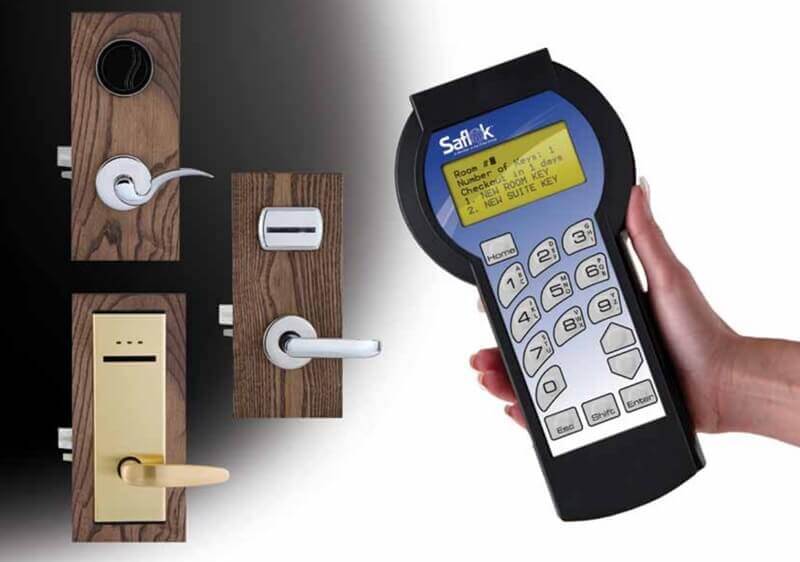
To help you troubleshoot the error codes Saflok door locks can produce, we’ve compiled a list of the most common Saflok troubleshooting codes and their solutions. These tips will help you identify your specific problem and fix it.
If an error occurs while programming the lock, the LPI terminal will display the following error code on the screen, for example: * * * LPI ERROR XXX * * *
Code Description
- 113 All Keys: The key is invalid in the current lock mode or cycle. If LED Diagnostics is on, turn it off. A lock is typically in an invalid way. Refer to Section 3, Invalid Mode Indicators, for additional information. When the PPK or SPK LEDs are flashing, this code may also appear if you use Standard or Display keys.
- 117 Standard, Special, PPK, and SPK Keys: the lock is shut down because ten or more invalid keys were used. A valid key must be used to terminate shutdown mode.
- 122 Standard Keys: The lock is non‐operating for this key type. The key does not belong to this lock.
- 123 Standard and Special Keys: The key is not mastered into the lock. The key does not belong to this lock.
- 127 Standard Keys: The key does not have one of the 12 valid Pass numbers required for the Pass function.
- 128 Standard and Special Keys: The key is old; its new key date is earlier than the lock’s key data. Replace the key with a current or unique key.
- 129 Standard and Special Keys: The key is old; its new key time is earlier than the lock’s key data. Replace the key with a current or unique key.
- 134 Standard and Special Keys: The key is an old key. The key type has a limited sequence range (1‐15), but the key’s sequence number is older than the lock’s key data. Replace the key with a current or new key. Use a re‐sequence key if necessary.
- 135 Standard and Special Keys: The key is too new; the key type has a limited sequence range, and the key’s sequence number is beyond the lock’s key data and capacity. Make and use a re‐sequence key, then try the original key again.
- 136 Standard Key: The key is a Limited Use Key and has already been used the maximum number of times. Replace the key with a new key.
- 137 Standard Key: The key is new, but the door is deadbolted, and the new key cannot be accepted. The room is still occupied if the key is for a new guest. Assign a new guest to another room.
- 141 All Keys: The key is expired based on the lock’s clock date and time. Replace the key with a duplicate key with a later expiration date and time.
- 145 Standard and PPK Keys: the shift key is not valid.
- 149 Standard Key: The key is current, but the key’s level is inhibited. Replace the key with a new key.
- 150 Standard Key: The key is current, but the key is inhibited. Replace with a new key.
- 152 Standard Key: The key is electronically locked out. Use the electronic unlock key to remove the electronic lockout.
- 154 Standard Key: The key is an opening key, but the lock is deadbolted or has a privacy switch set, and the key cannot override it.
- 176 PPK and SPK Keys: None of the key’s three combinations matched the lock’s current combination. The key is either too old, too many were made, and never used. The key must be reprogrammed into the lock using a valid SPK or PPK key.
- 178 Standard Key: The new key is identified as a pre‐reg key, which will not work until its check-in date and time. If desired, replace the key with a new key.
- 187 Status Key: In a programming cycle, the Status Key is used after PI keys, but it must be the first and only key used after the program cycle begins. To program in a Status Key, use the PPK or SPK key followed by the Status Key.
Please note: All above error code information comes from the Saflok system 6000 manual; for more information, please check The Saflok system 6000 manual.
Saflok door locks light codes.
If you have trouble with your Saflok door lock, here is a list of Saflok led codes.

Generally, there are three light codes on the face of Saflok: green, yellow, and red. When a keycard is used on the Saflok door lock, you can find Saflok lock light code information.
Green Light:
When a correct keycard is used, a green light will flash for about six seconds. This Light indicates that the Saflok works well and that the locking mechanism has been released; now, the door handle can be depressed to open the door.
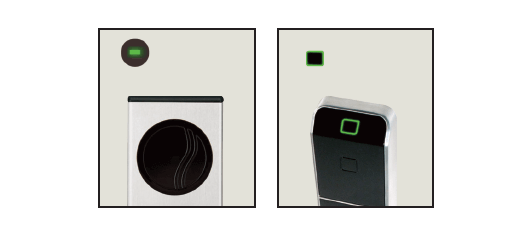
Yellow Light:
Yellow Light Flashing 12 Times: You use the correct keycard in the lock, but somebody has used the deadbolt or privacy button to lock the door inside the room.
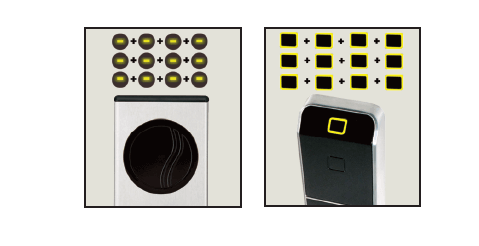
Yellow Light Fast Flashing 8 Times: This means you are using a correct keycard in the lock but refused to open the door lock for one of the following reasons:
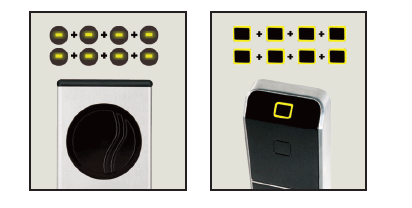
- The door lock is double-locked by another authorized key card
- This key card has been prohibited from opening this door lock.
- The key card has been automatically prohibited, or the prohibited key is preventing locking.
- The key card has expired.
- This key card is programmed to work only during certain periods.
Yellow and red flash four times together: Your key card may be damaged or not programmed correctly, so the Saflok door lock can not read all the information on the key card;
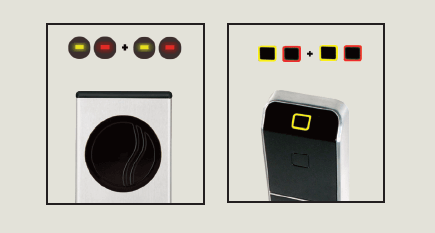
- Please try to use this key card again and Ensure the key is being used correctly.
- You may need to clean the lock with a cleaning card.
- Try programming a new key card to open this lock.
Two Yellow Flashes: This means you are using an incorrect key card. Please remake the key.
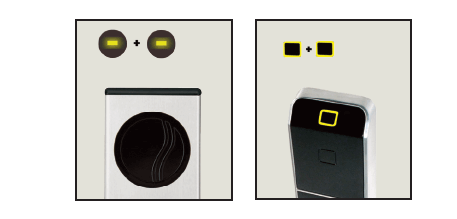
One Yellow before Green or Yellow: Your master will expire soon.
Yellow light flashes once (1x): You use a not-programmed key or lock for the hotel. Please reprogram the door lock and a new key.
Red Light
Flashing Red Light Alternately: The Saflock hotel lock batteries are low; please replace batteries ASAP.
Flashing Red Light Simultaneously: The clock needs to be reset.
Red Flash 1 Time: If this happens when a keycard is used in the lock, it means the keycard was misused (upside down, backward, or not removed). If a red light flashes one time when no keycard is used, the key switch is stuck.
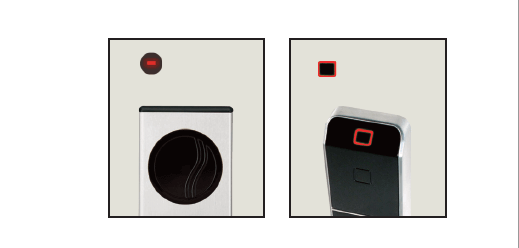
Red Light flashes once (1x) every 30 seconds: The key switch is broken; replace the lock reader.
Red Light flashes twice (2x): The Saflok lock can not read any information from the key card.
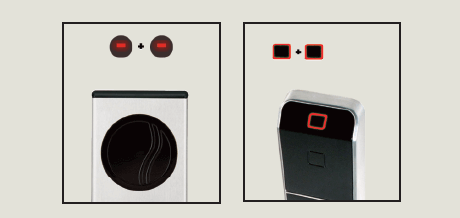
Hybrid LED lights
Yellow and Red Lights: Two yellow and red flashes indicate that the lock could not correctly read the lock code on the keycard.
Red and green lights flash together for 4 seconds (the lock will still open). The lock’s time and date need to be updated.
Red and yellow lights flash together for 6 seconds. The lock’s time and date must be updated.
Green and red lights flash alternately for 4 seconds. The lock’s batteries must be changed.
Yellow and red lights flash alternately for 6 seconds. The lock’s batteries must be changed
No Lights
If no lights appear when a keycard is used:
- An invalid key shutdown is in effect.
- The key switch is broken.
- The lock batteries are dead.
NFC Locks Only
Red Light (solid): Dead Battery or battery low; please replace batteries immediately.
The yellow light flashes once (1x): You are trying to wake up the lock with your mobile phone.
How do I reset the Saflok MT RFID?
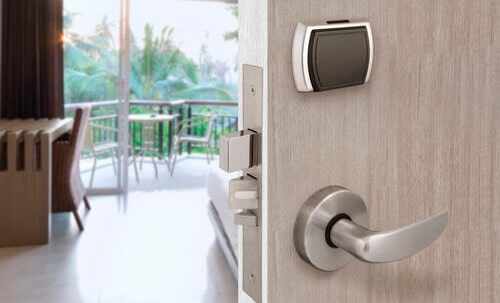
To reset your Saflok MT RFID, follow these steps:
- Gather the following materials: a flat-head screwdriver and a small piece of paper.
- Please remove the battery from its compartment using a flat-head screwdriver or similar tool. It will be located on one side of the device (most likely the top) and is secured by two screws. The battery can be removed by gently prying it up with your fingers; however, if you have difficulty removing it, try using a small piece of paper between your fingertips and the end cap as leverage.
- Once this cap has been removed, there will be two screws securing an internal cover plate which should also be removed with either fingers or another small flat-head screwdriver used to pry off this plate while applying slight pressure towards yourself. Nothing falls out into your hand(s).
- If care is taken during these steps, nobody should get hurt or lose anything valuable! You’ll now see two boards labeled R1 and R2 – these are where we’re going next because they contain our microchips, which need replacing when they become faulty due to normal wear-and-tear over time (usually less than ten years but up to 20 depending on usage).
Saflok manual PDF
Here are some Saflock door locks user manuals in PDF for your reference:
- The Saflok hh6 programmer manual
- Saflok MT RFID Lock Installation manual
- The Saflok system 6000 manual
- Saflok lock-led diagnosis guide manual
- Saflok Programmer and Interrogator Interface Probe
Conclusion
This is all you need to know about Saflok troubleshooting. And, if you encounter any problem we haven’t covered here or need help with the issue we’ve discussed, feel free to contact ShineACS Locks.

